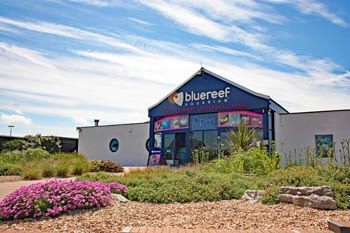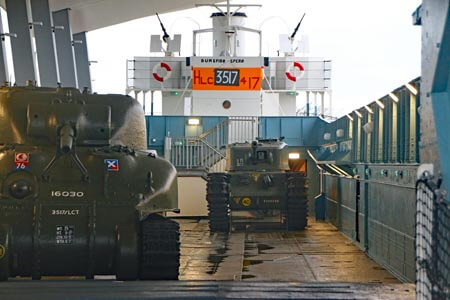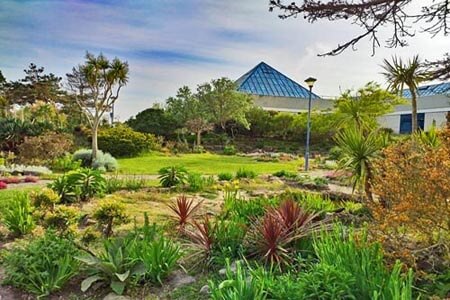Explore Southsea Seafront at Portsmouth

Southsea Seafront is a fantastic four mile, open space at the south of Portsea Island. Southsea Common and the seafront area was never developed during the expansion of Portsmouth and Southsea, as it was owned up until 1922 by the War Department.
It was maintained as an open space for the use by the military as an area for marshalling troops. While the rest of Southsea grew all around it, the open spaces of Southsea Common were retained and can now be enjoyed by all. Many of the improvements at Southsea Common happened during the tenure of Lord Frederick FitzClarence the Army officer who was Lieutenant-Governor of Portsmouth, a memorial to him can be seen opposite the Holiday Inn Hotel.
Southsea Seafront has a wide variety of activities, attractions and facilities for visitors to enjoy and the sea views across the Solent towards the Isle of Wight are always interesting due to the various ships and other vessels passing close to the shore.
Southsea Common stretches a distance of approximately 1½ miles from South Parade Pier to Clarence Pier at the western end. The common uniquely remained an open area during Southsea's development, as it was owned by the military and was used as a marshalling area for armies before embarkation to the waiting ships.
The common is often used to host large events such as the Southsea Kite Festival,
The Great South Run, Fairs and Circuses. There are a number of different childrens play areas to choose from, on Southsea Common, near Southsea Tennis Club and at
Canoe Lake.
Blue Reef Aquarium, Southsea

Blue Reef Aquarium in Southsea is a popular family attraction located along the Southsea Seafront. The aquarium showcases a wide variety of marine life from around the world, offering visitors an up close look at colorful fish, fascinating invertebrates, and majestic sea creatures. The exhibits range from local marine environments like the Solent waters to exotic tropical reefs, featuring species such as seahorses, rays, and sharks.
A exciting feature of the Blue Reef Aquarium is the underwater tunnel, which allows visitors to walk through and experience the marine life swimming overhead, providing a unique and immersive perspective. The aquarium also emphasizes conservation and education, with interactive displays and regular talks that aim to raise awareness about marine ecosystems and the importance of preserving them. With its engaging exhibits and educational focus, Blue Reef Aquarium is a key destination for families and visitors to Southsea.
Canoe Lake

Canoe Lake is a very popular park area with a boating lake, tennis and bowls courts, childrens play area and lots of open space for picnics and running around. It is located just to the east of South Parade pier and originally opened in 1866.
Canoe Lake was constructed from a remnant of the Great Morass, known as the Minnow Pond, a large area of marshland that was centred north east of Southsea castle, the majority of the Great Morass was drained during the early 19th century.
The childrens play area, on the eastern side of Canoe Lake near the Model Village, has a splash pool and more adventurous play equipment such as a zip wire.
Canoe Lake has always been a popular spot for picnics, kids love catching crabs here and there are boats for hire during the summer months. It is also a great spot to sit and relax.
D-Day Story Museum

The D-Day Story on Clarence Esplanade at Southsea, is unique as it is the UK's only museum solely concerned with the D-Day landings in Normandy in June 1944, which changed the course of the second world war.
Portsmouth and the surrounding area was heavily involved in the landings, due to it's naval connections but additionally the landings were controlled from the Allied headquarters at Southwick House, just north of the city.
The museum's centrepiece is the 83 metre long Overlord Tapestry which depicts the heroism and courage of all who took part in the D-Day landings know as Operation Overlord.
Visit our D-Day Story Museum page for more information.
The Rock Gardens

Just to the east of the Pyramids Centre are the Rock Gardens a quiet sheltered garden, this is a perfect place for a peaceful rest or to sit and listen to the birdsong on one of the benches.
Built during the 1920's as part of the Government "Back to Work" initiative following the 1st World War, the huge rocks used in the construction of the Rock Gardens, Westmorland limestone, were sourced from Cumbria.
During WW2 the Rock Gardens was closed as the Seafront was declared a restricted zone as part of the coastal defences. The beach was enclosed in barbed wire. Following the war the garden was restored and replanted with plants more suited to the maritime conditions.
The planting includes a wide variety of shrubs, herbaceous plants and alpines, there are also ponds and a small fountain. Due to it's varied planting and water features the garden attracts a lot of wild life.
The Rock Garden at Southsea is managed by Portsmouth City Council and some maintenance work is carried out by the Friends of Southsea Rock Garden a community group of volunteers who undertake gardening duties.
Southsea Bandstand

Located at West Battery Gardens near Southsea Castle, Southsea Bandstand is home to
regular concerts run by Portsmouth City Council, these run from the late May Bank Holiday until the August Bank Holiday.
To view a full listing of concerts visit our Southsea Bandstand programme page for more details.
The iconic Southsea Bandstand adorned by the Star and Crescent coat of arms on the roof, is the work of local blacksmith and sculptor Peter Clutterbuck, who is based at The Forge in Osborne Road, Southsea.
Concerts at the Bandstand are free events and can attract large crowds, especially when the weather is good.
Southsea Castle

Southsea Castle was built during the reign of Henry VIII as part of a series of coastal defences,
it was later extended by Charles II and saw action during the English Civil War.
Southsea Castle was constructed on a highly strategic point of the coast, due to the position of the sea channels at this point, no substantial ships or vessels, can approach the mouth of Portsmouth harbour without passing very close to the castle, where they could easily be fired upon by the artillery stationed there.
Henry VIII's warship Mary Rose, now housed in Portsmouth's Historic Dockyard, sank just offshore of the castle. Read more at our Southsea Castle page.
Southsea Skatepark
Southsea Skatepark in Portsmouth is one of the UK's oldest surviving skateparks, having opened in 1978. It holds a special place in skateboarding history, both in the UK and globally, as a pioneer of the sport. The park has maintained its original concrete design, featuring a mix of classic and contemporary skate structures like bowls, vert ramps, mini ramps, and street sections. These features cater to a wide range of activities, including skateboarding, BMX, inline skating, and scooter riding.
Regular events such as skate jams, live music performances, and exhibitions keep the park vibrant and relevant. It also offers workshops and coaching sessions to nurture new talent, making it a welcoming space for beginners as well as seasoned skaters.
Southsea Splashpool
Located just outside of the Southsea Tennis club building. The splash pool is intended for children under the age of 8 years and is in a fully enclosed area.
It has two shallow splash pools plus a variety of other play equipment such as a see-saw and mini trampoline. The surrounding area is grass and there are plenty of picnic tables and benches to use.
You can find details of other Parks and Open Spaces in Portsmouth here.